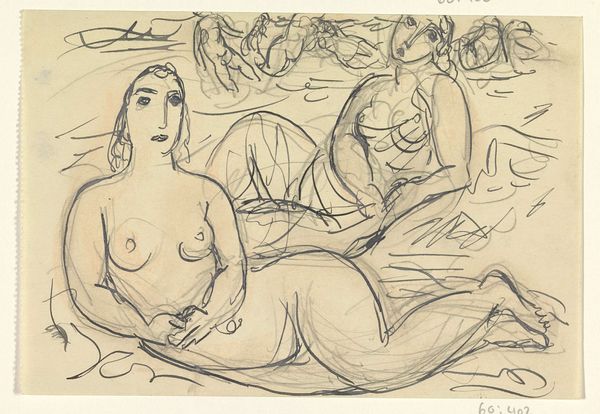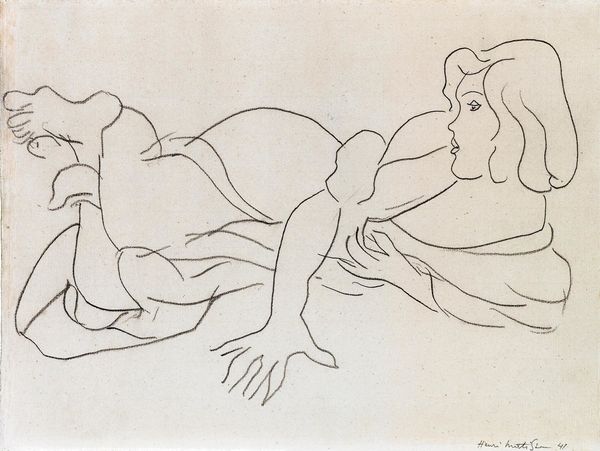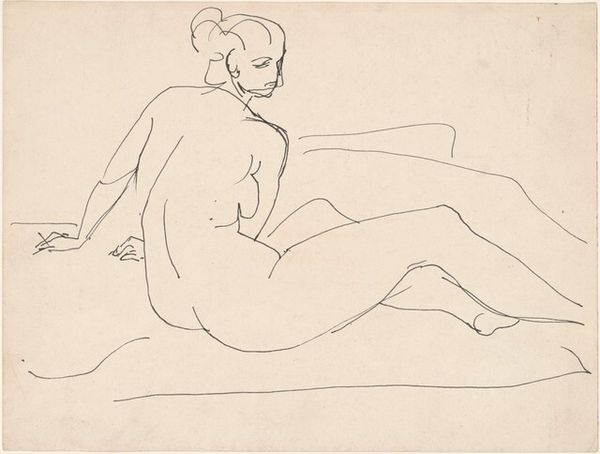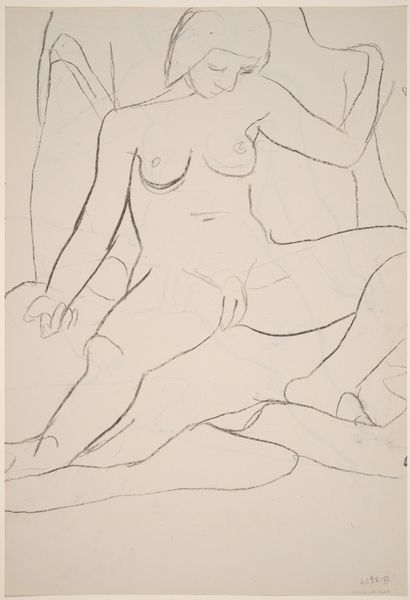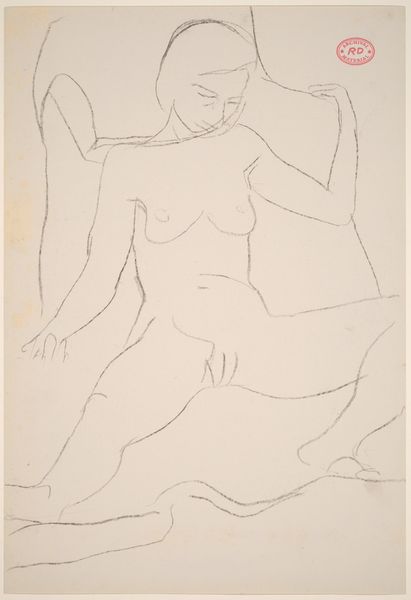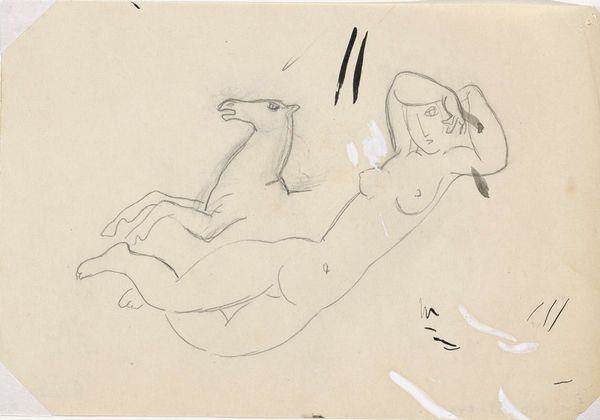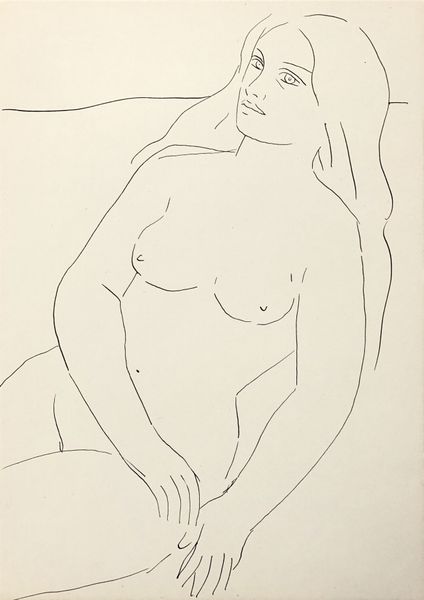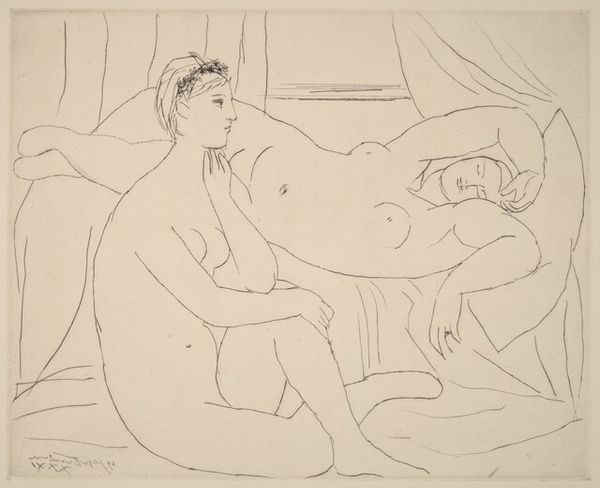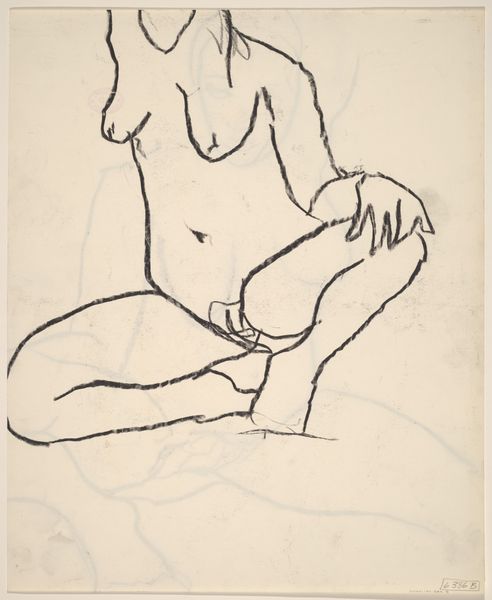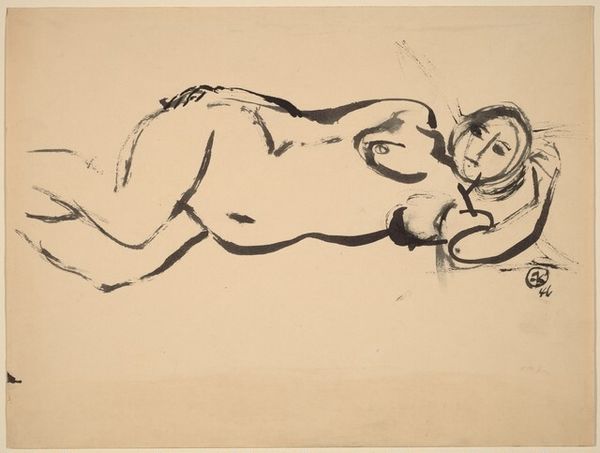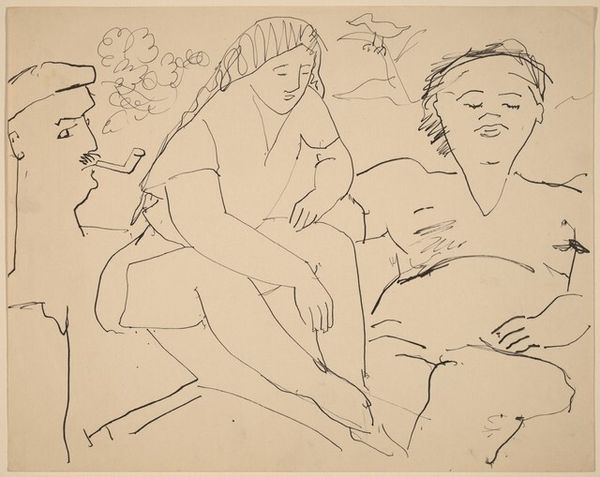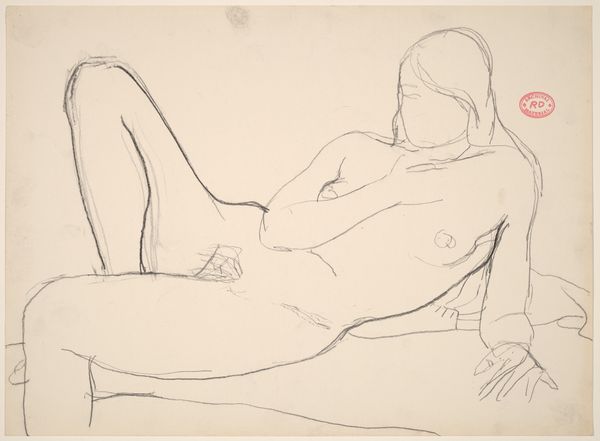
Venus Vignet voor boek 'L'art Hollandais contemporain' van Paul Fierens 1932 - 1933
0:00
0:00
Dimensions: height 134 mm, width 197 mm
Copyright: Rijks Museum: Open Domain
Curator: Let's discuss this intriguing ink drawing by Leo Gestel, titled "Venus Vignet voor boek 'L'art Hollandais contemporain' van Paul Fierens." It was created between 1932 and 1933, and, as you can see, it's a preparatory sketch meant as a book illustration. Editor: Wow, she's quite striking. The image leaps off the page! At first glance, I'm caught by her gaze; so direct. And the horses...it feels dreamlike, like a scene from a myth bubbling to the surface. The sketchy quality makes it feel alive. Curator: The "Venus" vignette uses sinuous lines typical of Art Nouveau combined with elements of symbolism. This artistic style blends figure and elements like animals, attempting to tap into themes that resonate with mythology. It reflects broader European Symbolist explorations of the era where gendered metaphors often played a vital role. Gestel appears to subvert classical approaches of female figuration. What is the image communicating? Editor: You know, looking at the contrast in her almost geometric face versus the organic shapes surrounding her gives the entire sketch a subtle tension. Her reclining posture with the dynamic energy of the animals around her—she almost seems to embody the eye of the storm. It also appears as though it captures the feminine perspective, yet almost a raw feeling of animalistic desire is subtly expressed. It's rather interesting for its time. Curator: Indeed. Gender representation in this era navigated increasingly complex ideological waters. This preparatory drawing allowed the artist an opportunity to express those ideas through this depiction. Considering that, can you connect that reading with current feminist thoughts about female sexuality and nature? Editor: Thinking about reclaiming one's bodily autonomy comes to mind, viewing herself and owning it without external validation is perhaps Gestel's intent with her gaze and overall demeanor within the scene he renders, I like the tension between traditional feminine figures, raw animal desire, and independence as it speaks volumes to women who came during that period. It also still impacts us today when we as modern people find the need to own our autonomy over ourselves as well. It is so important, isn't it? Curator: It certainly is. Thank you for your personal insight; viewing the piece with a feminist reading provides great depth. Gestel's rendering really makes a lasting impact as viewers engage it with both historical perspectives and current discourse. Editor: Definitely, and who knows? Maybe old Leo would enjoy that we're still mulling it over after all these years. I really enjoyed thinking through Gestel’s Venus today, and look forward to the next encounter we have to look into similar matters.
Comments
No comments
Be the first to comment and join the conversation on the ultimate creative platform.
